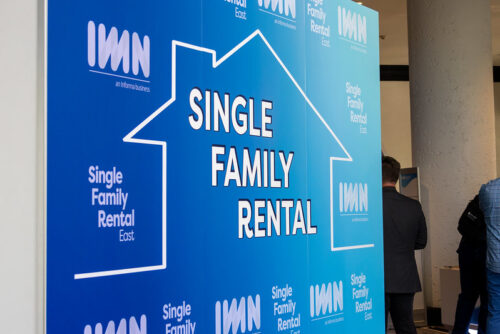
Connect with a Lima One expert today!
If you’d like to know more about this topic or see how it applies to your project, let’s talk.
Real Estate 101RentalScaling Your Portfolio
Top 10 College Towns for Short-Term Rental Investing
College towns can be great places for short-term rental investments. When you think of college towns, your mind probably first goes to student housing, which is in high demand and can be very lucrative for investors. But other opportunities such as family weekends, sporting events, concerts, graduations, and college tours can boost STR real estate profits year-round.
Additionally, college towns tend to have a stable economy, even during economic downturns. Students and faculty are typically employed year-round, and there is a steady stream of visitors and events throughout the year because of the college calendar.
For example, tourists spent $895 million in Tuscaloosa, Alabama in 2022. Tuscaloosa is home to the University of Alabama, which is the area’s largest employer and responsible for a significant portion of Tuscaloosa’s tourist income.
According to Tuscaloosa Tourism and Sports, a good portion of the $895 million came from home football games at Bryant Denny Stadium, which generated $20 to $25 million dollars each. Tuscaloosa also has over 4,000 hotel rooms which generated $104 million in lodging revenue. But in many college towns, there aren’t enough hotel rooms to satisfy the demand for large events like football games or graduation weekends.
That type of stable economy and regular tourism provides a great environment for short term rental investing.
Investing in Rental Properties in College Towns
The areas surrounding universities are also moneymaking opportunities. Rental units, whether in multifamily properties or in traditional single-family residences, are in a prime location because of their proximity to the college, and most students will be more concerned with practicality over style, especially if it’s their first apartment or rental home. This gives investors plenty of room for profit.
Additionally, owning short-term rentals in college towns can be a great way to generate income and build wealth. Short-term rentals can offer several advantages and disadvantages over traditional long-term rentals in these settings, including:
- High demand: College towns are known for dramatic spikes in population, as parents, alumni, and fans visit. This creates a high demand for housing.
- Higher rental rates: Short-term rentals in college towns can command higher rental rates than traditional long-term rentals because there is a limited supply of housing during the school year, and many people are willing to pay a premium in terms of average daily rate (ADR) to stay in a convenient location.
- Equity: Short-term rentals can help investors build equity in real estate. When investors rent out their properties, they are essentially collecting rent on an asset that they own which can help them build equity over time. Many short-term rental investors find that strong STR investments
- Tenant turnover rate: Short-term rentals have a higher turnover rate than long-term rentals, which means investors need strategies to ensure overall occupancy meets the levels they need.
- Local regulations: College towns often have more complex regulations governing short-term rentals, which can make it more difficult for investors to get started, can limit the ability to charge market rent, and can increase costs associated with complying with regulations.
- Insurance costs: Insurance costs are typically higher for short-term rentals than for long-term rentals because there is a greater risk of damage or theft in short-term rentals.
Overall, owning short-term rentals in college towns can be a profitable investment. It’s important for investors to research the market, find the right property, and manage it wisely. The differences between leasing a standard rental and managing a short-term rental like an Airbnb are significant, so investors should know what they’re getting into as a landlord beforehand.
Best College Towns for Short-Term Rentals
Before investors buy short-term rental properties in college towns, it’s essential to understand what markets are the hottest and where there is the potential for the greatest ROI.
College towns across the country have seen short-term rent increases post-COVID, according to short-term rental market data from the Waller, Weeks and Johnson Rental Index. Rental increases in college towns are good news for investors for two reasons:
- Rental increases can mean more profit for investors.
- Despite these rental increases, data shows that monthly rent growth is still affordable for renters.
Los Angeles, CA
- Popular Colleges: California Institute of Technology (Caltech), University of Southern California (USC), and University of California, Los Angeles (UCLA)
- Average Rent: $2,994
- Where Average Rent Should Be: $2,907
- Difference: 9.81%
Miami, FL
- Popular Colleges: University of Miami, Florida International University
- Average Rent: $2,817
- Where Average Rent Should Be: $2,578
- Difference: 9.27%
Seattle, WA
- Popular Colleges: University of Washington, Seattle University
- Average Rent: $2,285
- Where Average Rent Should Be: $2,241
- Difference: 1.98%
Minneapolis, MN
- Popular Colleges: University of Minnesota
- Average Rent: $1,653
- Where Average Rent Should Be: $1,878
- Difference: 2.90%
Austin, TX
- Popular Colleges: University of Texas at Austin
- Average Rent: $1,932
- Where Average Rent Should Be: $2,241
- Difference: 1.98%
Columbus, OH
- Popular Colleges: Ohio State University
- Average Rent: $1,543
- Where Average Rent Should Be: $1,475
- Difference: 4.62%
Nashville, TN
- Popular Colleges: Vanderbilt University, Belmont University, Lipscomb University
- Average Rent: $1,986
- Where Average Rent Should Be: $1,884
- Difference: 1.98%
Knoxville, TN
- Popular Colleges: University of Tennessee
- Average Rent: $1,870
- Where Average Rent Should Be: $1,685
- Difference: 10.31%
Baton Rouge, LA
- Popular Colleges: Louisiana State University (LSU)
- Average Rent: $1,417
- Where Average Rent Should Be: $1,367
- Difference: 3.69%
Provo, UT
- Popular Colleges: Brigham Young University (BYU)
- Average Rent: $1,860
- Where Average Rent Should Be: $1,775
- Difference: 4.77%
NOTE: This data from Waller, Weeks and Johnson Rental Index shows where rents should be (based on a history of rents) compared with actual, current rents. The percentage difference is the difference between statistically modeled prices and actual rental prices, showing the ability of investors to grow their income.
Key Takeaways for Investors
Investing in short term rentals in a college town is an attractive strategy for investors.
Like any other real estate investment deal, choosing the right lender is key. That’s where Lima One Capital comes in. With our DSCR-based STR loans, we can help investors finance the purchase of short-term rentals or take cash out of an existing rental property portfolio.
Lima One is the nation’s premier private lender. Our short-term rental loan program was designed for investors interested in Airbnb properties, VRBO rentals, and other types of short-term rental loans. With our nationwide footprint, Lima One empowers your investment strategy.
If you’re considering purchasing a short-term rental investment property or want to take cash out from a current property through a refinance loan, Lima One Capital can help. Contact us to get started with your next short-term rental investment or accelerate the process by applying now.
Subscribe for More Insights
Get the latest industry news & Lima One updates.









